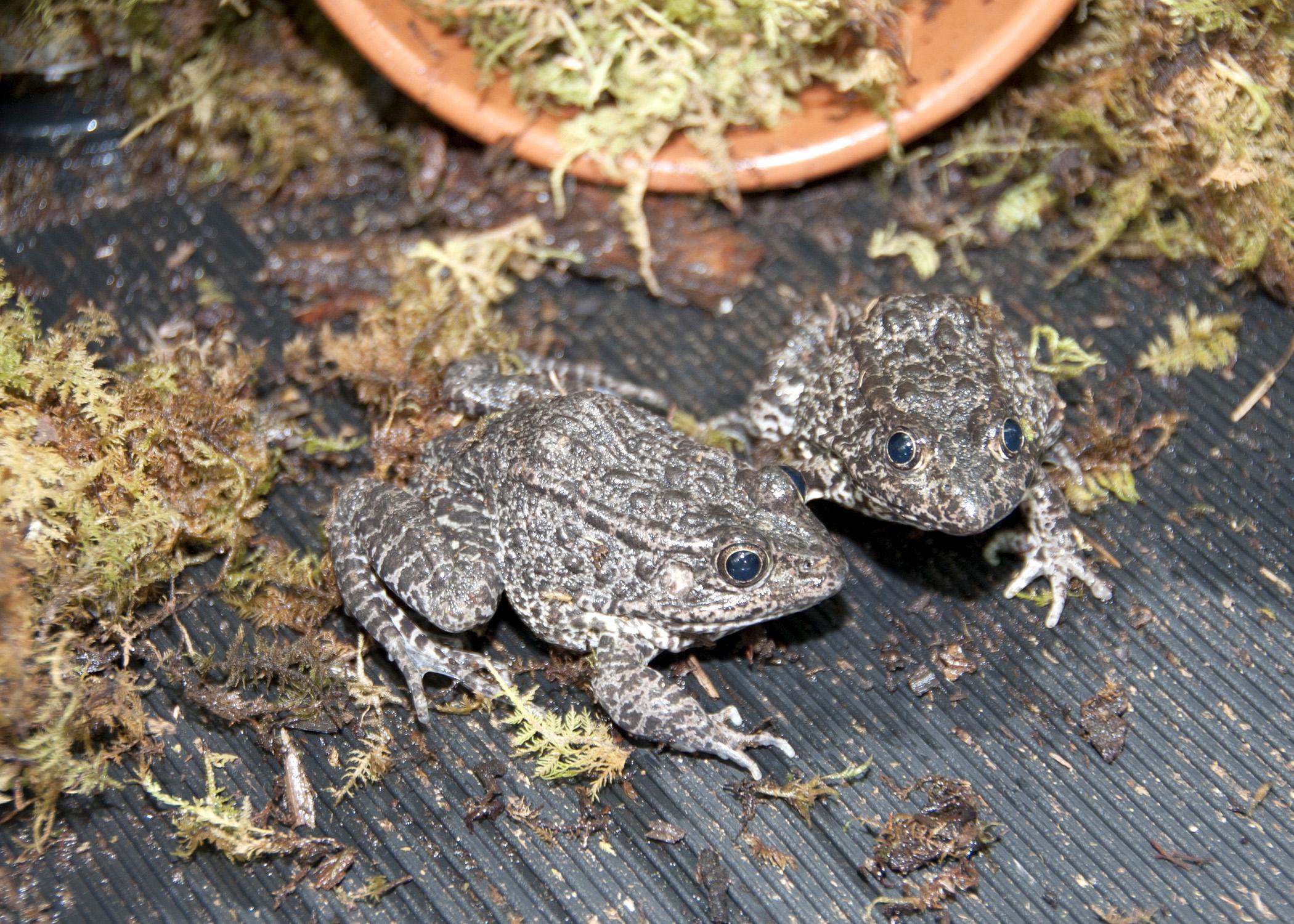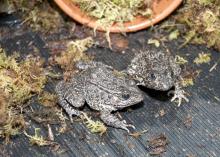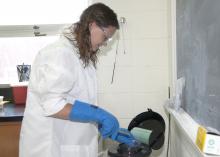Information Possibly Outdated
The information presented on this page was originally released on July 18, 2013. It may not be outdated, but please search our site for more current information. If you plan to quote or reference this information in a publication, please check with the Extension specialist or author before proceeding.
Critically endangered frogs housed at MSU
MISSISSIPPI STATE – Mississippi State University has joined the ranks of conservationists trying to increase the population of one of the most critically endangered species living in North America.
Mississippi gopher frogs are native to south Mississippi, and for a time, the only known colony living and breeding in the wild was living in one Harrison County pond. They have since been found living near three other ponds in the DeSoto National Forest, bringing the total known wild population to an estimated 100-200 gopher frogs.
More than 700 additional gopher frogs live in captivity, and one Mississippi Agricultural and Forestry Experiment Station lab has 34 of the adult frogs. Natalie Calatayud, a postdoctoral fellow, and Cecilia Langhorne, a graduate student pursuing her doctorate in animal physiology, care for these frogs. Their work is in partnership with the Memphis Zoo, which supplied the frogs to MSU.
“The problem with their dwindling numbers is a loss of habitat,” Calatayud said.
In their natural habitat, the frogs are what are known as “explosive breeders,” Langhorne explained.
“They need an event, such as a torrential downpour, and then they all move in one night to the same pond and mate,” she said.
The ponds they choose to live near are ephemeral ponds. These temporary ponds, formed in wetland areas by rainfall, last for a few weeks and then disappear.
“The tadpoles must metamorphose by the time the pond dries up,” Langhorne said.
In response to the frogs’ loss of habitat, the U.S. Forest Service, U.S. Fish and Wildlife Service and other conservation groups have stepped in to protect the habitat that remains. These organizations also work to create new habitat the frogs will find suitable for breeding.
“They are trying to design ponds that form with trapped water and then dissipate,” Calatayud said. “There is a lot of effort going into habitat restoration.”
At MSU and the 14 zoos studying gopher frogs, researchers are trying -- so far without success -- to get captive colonies to breed naturally.
“Getting the females to lay eggs has been a little bit of a problem,” Calatayud said. “All our breeding is done by in vitro fertilization, but we’re trying to figure out what conditions are necessary to get the captive colony to breed naturally.”
Mississippi State researchers are working to refine the hormone treatments used to get the females to lay eggs. They are also working to preserve the genetic diversity of the species by biobanking the frogs’ cryopreserved sperm.
“With only 100-200 in the wild and 700 in captivity, it is important to avoid genetic bottlenecks,” Calatayud said. “If we can’t make them breed naturally in captivity at the moment, then what we can do is to create a bank of genetic diversity so we can help that population out manually if we need to.”
MSU’s frogs are about 3 years old and are expected to live up to 9 years in captivity. The frogs’ gender must be determined by ultrasound. MSU is home to 19 females and 15 males.
Individual frogs are difficult to tell apart, but researchers identify them using passive integrated transponders inserted beneath the skin. These devices are smaller versions of the microchips used to identify dogs and cats. Langhorne said they hope to name the frogs after famous Mississippians soon.
Scott Willard, head of the MSU Department of Biochemistry, Molecular Biology, Entomology and Plant Pathology, said the work is important because the presence and health of gopher frogs and other amphibians are indicators of the overall well-being of some vital natural habitats in Mississippi.
“Our research is centered on understanding how to develop protocols to bring species back from the brink in the laboratory, but larger questions persist regarding habitat maintenance and restoration efforts,” Willard said.
He said the research has direct application to the propagation of endangered amphibian species, with far-reaching implications if technologies can be applied broadly.
“We hope that this work can be expanded to other species as well,” Willard said. “However, we often find that what works for one species may not work, or may be completely different, in another species. But these are the challenges we face when working with species on the brink of survival.”






